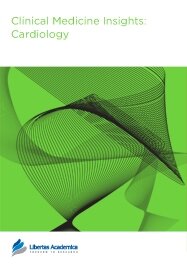

Publication Date: 17 Sep 2010
Type: Short Report
Journal: Clinical Medicine Insights: Cardiology
Citation: Clinical Medicine Insights: Cardiology 2010:4 85-87
doi: 10.4137/CMC.S5933

Left ventricular noncompaction/hypertrabeculation is a condition which is characterized by a highly trabeculated, “spongy” myocardium. It can present at any age with heart failure, arrhythmia and/or thromboembolic events. A wide variety of mutations have been found to be a cause of hypertrabeculation and it is possible that there is a continuum of hypertrophic cardiomyopathy, dilated cardiomyopathy and hypertrabeculation/noncompaction. We present a case of left ventricular hypertrabeculation which presented as sudden infant death syndrome and we propose that this entity may be a hidden cause of arrhythmic death in some infants presenting as sudden infant death syndrome.
PDF (824.01 KB PDF FORMAT)
RIS citation (ENDNOTE, REFERENCE MANAGER, PROCITE, REFWORKS)
BibTex citation (BIBDESK, LATEX)
XML
PMC HTML

I am impressed by the efficiency at each step of submission in the journal. Based on the first-hand experience, I am confident that this journal will have a great future, and the impact factor will rise rapidly.

All authors are surveyed after their articles are published. Authors are asked to rate their experience in a variety of areas, and their responses help us to monitor our performance. Presented here are their responses in some key areas. No 'poor' or 'very poor' responses were received; these are represented in the 'other' category.See Our Results
Copyright © 2013 Libertas Academica Ltd (except open access articles and accompanying metadata and supplementary files.)
Facebook Google+ Twitter
Pinterest Tumblr YouTube